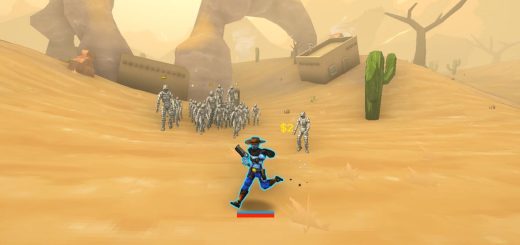Rytmos review – all the tangled beauty and curiosity of music itself
The middle eight, a component of songwriting I really love, is sometimes referred to as being a “meanwhile, back at the ranch” moment for a piece of music. The song has established a structure by this point, and we’ve followed that for a pleasant few minutes. We know the verses and we know the chorus. We know what to expect in general – or we think we do. And then, suddenly we’re somewhere else. Choirs. Angels. Elvis is drying the tears from our eyes. A familiar theme, but now it’s strange and inverted. Slowed, sped up, twisted in on itself. Meanwhile? Oh yes, this is what’s happening back at the ranch.
Rytmos review
- Publisher: Floppy Club
- Developer: Floppy Club
- Platform: Played on Switch and PC
- Availability: Out now on Switch and PC (Steam, Epic)
I love this description of middle eights almost as much as I love a good middle eight by itself. I love it because it suggests that a song is a journey, that as we listen to it unfold we are covering ground alongside it, within it. And when the middle eight arrives, the ground we’re covering shifts and we get a bit of a surprise.
Not every song has a middle eight, and not every song needs one. But I thought of them often when playing Rytmos, a game in which each piece of music is a path that you draw across the landscape. These paths are mazes, really. Often, these mazes take the form of figure eights, which is a nice bit of accidental harmony, I reckon. The “eight” itself isn’t important though. What is important – or what feels important when I’m in the grips of this magical, transporting, mind-expanding game – is the loops in the figure eight. It’s the fact that the song starts somewhere and ends up back where it started – but it arrives back at the start from an unexpected direction.
Rytmos is a musical puzzle game. I started playing it on PC and transferred to Switch when I realised that this is something that needs me to lean forward into the screen. It needs to be held in the hands. It needs the tangibility and special force of imagination that handheld games encourage. The idea is simple. Each level gives you a starting point and a number of towers poking out of the ground nearby. You coax a line from the starting point and try to connect it with the towers before getting back to the starting point again to finish up.


